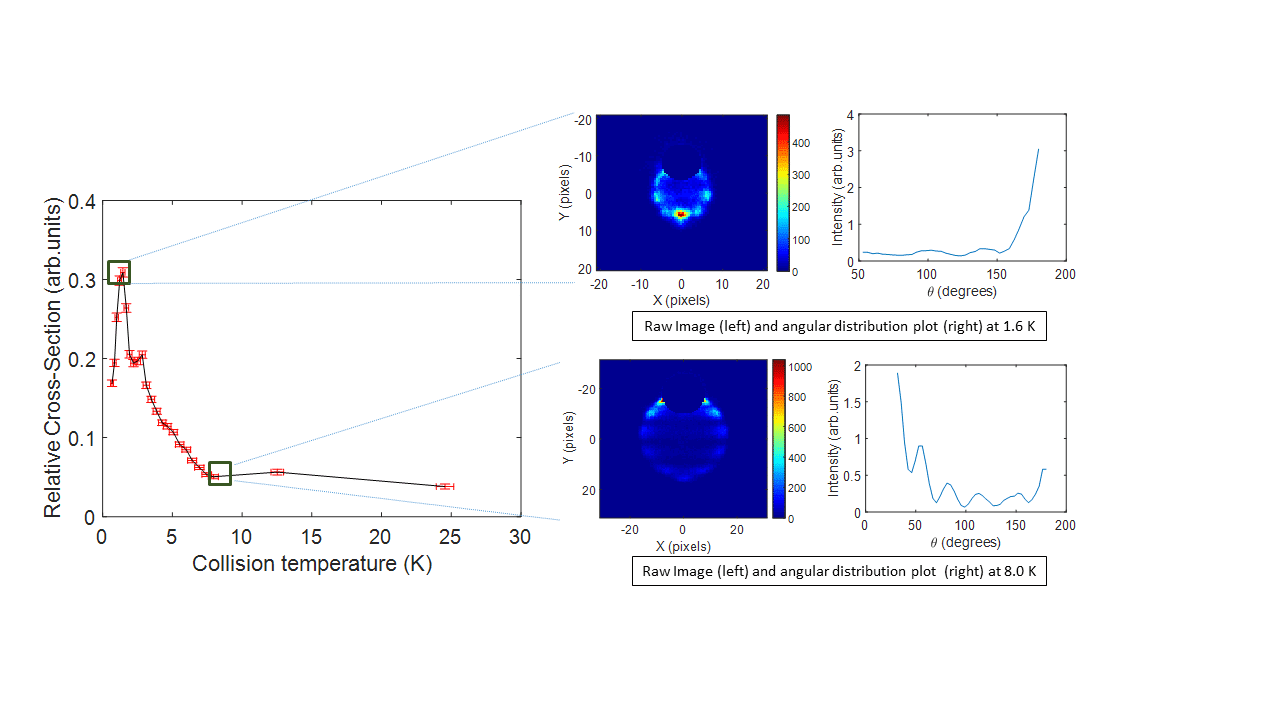
Imaging quantum diffraction in elastic collisions
2Department of Chemical and Biological Physics, Weizmann Institute of Science, Rehovot, Israel
Colliding particles at low temperatures (few-Kelvin to milli-Kelvin range) reveals quantum nature of interaction between any atoms or molecules. At these temperatures, the de Broglie wavelength of the collisional system becomes comparable to the effective range of the interaction and the collisions are dominated by a few partial waves.
We will present our recent results from elastic collision studies of neutral ground state neon atoms (Ne) with helium atoms in the 2(3S1) excited state (He*). We employ merged beam method [1] in combination with velocity map imaging technique [2] to probe the dynamics of these collisions below 10 Kelvin. Our results from He*- Ne elastic collisions show a backward peaking resonance around 1.6 K along with diffraction oscillations in the observed differential cross section. The high resolution that velocity map imaging technique offers when combined with near-threshold ionization is evident in the sharp features observed in our experiments

References:
[1] Henson et al., Science 338, 234 (2012)
[2] A. Eppink and D.H. Parker, Rev.Sci. Instrum. 68, 3477 (1997)
Powered by Eventact EMS